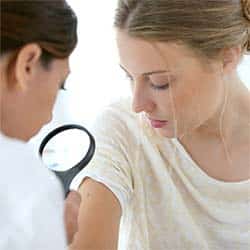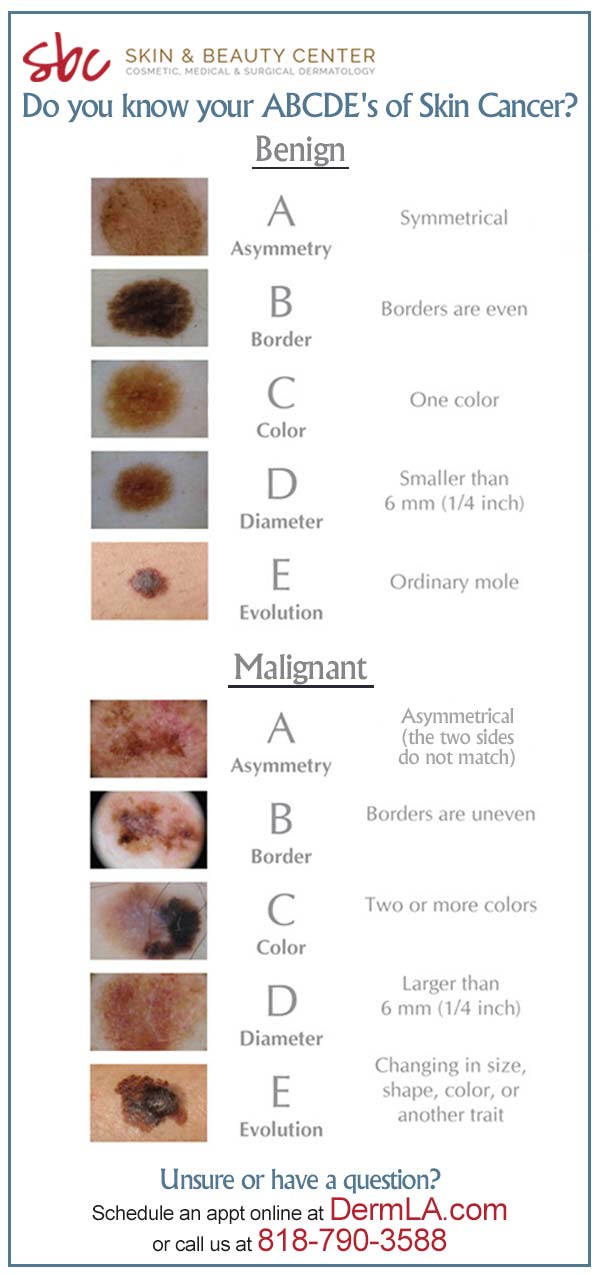Skin cancer is the most common form of cancer. In the US alone, there are over 5.4 million cases of non-melanoma skin cancer (basal cell carcinoma and squamous cell carcinoma) treated each year in over 3.3 million people. As Americans are living longer, it is now estimated that 1 in 5 of them will be diagnosed with some form of skin cancer in their lifetime. These non-melanoma skin cancers are not usually aggressive and very rarely metastasize. Most patients affected with these types of skin cancer are able to lead normal, healthy lives if diagnosed and treated early. When left unattended, however, these skin cancers can cause significant localized symptoms such as bleeding and pain. Furthermore, they may become locally destructive to underlying and nearby structures causing disfigurement and disruption of function of vital structures such as the eyes, nose and ears.

The other major category of skin cancer is malignant melanoma which, while only accounting for less than 1% of all skin cancers, accounts for majority of deaths from skin cancer. This is because, unlike basal cell and squamous cell carcinomas, melanomas behave aggressively and can become metastatic (i.e. spread to other distant sites of the body) if left untreated. Therefore, early detection and treatment of melanomas is of utmost importance in determining survival. It is noteworthy that less than half of melanomas arise from pre-existing moles and that majority of melanomas are flat and not raised. The “ABCDE” criteria below were developed in order to help patients detect suspicious moles during self-skin examinations:
- A – Asymmetry (the two halves of the mole do not appear similar)
- B – Borders (the borders of the mole are not smooth)
- C – Color (the color of mole is different from all your other moles or it is not the same throughout)
- D – Diameter (the diameter of the mole is larger than 6 mm or the size of a pencil eraser
- E – Evolution – (the mole has been changing in color, size, shape, etc)

A mole that meets any of these criteria is not necessarily cancerous but rather that it should be clinically evaluated by a dermatologist. Of the above criteria the most important to keep mind is “evolution”: any rapidly changing mole or any “ugly duckling” mole (i.e. mole that appears different than rest of one’s moles) should be evaluated by a dermatologist. Furthermore, any newly appearing moles, especially in patients over 30 years of age, require clinical evaluation.
Finally, it is important to note that protection from UV radiation from the sun and avoidance of artificial tanning are the most effective ways in reducing one’s risk factor for skin cancers. Sunscreens with an SPF (sun-protection factor) rating of 30 or higher should be applied to all sun exposed sites on a daily basis and then reapplied every 90 minutes if out in the sun. This is especially important during the peak UV radiation hours of 10 AM to 4PM. Furthermore, when possible one should seek shade and wear a hat when out in direct sunlight. Be sure to practice these measures on routine basis and stay vigilant of suspicious skin lesions with monthly self skin exams. Just as important is visiting your dermatologist at least once a year for skin screening. In combination these measures will result in earlier detection and treatment of skin cancers and thus allow one to lead a normal, healthy life even when a skin cancer diagnosis is made.
If you or someone you know thinks they may have something suspicious, contact SBC immediately and make an appointment to get checked

